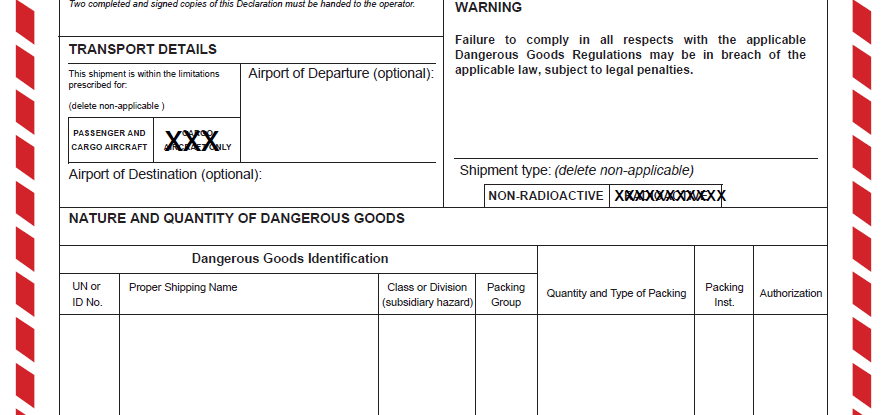Since the beginning of 2025, several customers have reported dangerous goods by air shipments rejected due to minor discrepancies with their shippers declarations.
Many have been using old shippers’ declarations that include the term ‘risk’ instead of ‘hazard’. This has been cited as a reason by acceptance staff for rejecting shipments.
The issue stems from a change in the (2019) 60th edition of The International Air Transport Association (IATA) dangerous goods by air regulations. Throughout the regulations, the term ‘subsidiary risk’ was replaced with ‘subsidiary hazard’. This change was also reflected in the shipper’s declaration for dangerous goods – with shippers given until the end of 2024 to transition.
Several shippers still using old documentation have in 2025 had their shipments stopped, causing delays and incurring rejection costs.
In new guidance published this week, IATA has made clear that minor discrepancies in Dangerous Goods Declarations (DGD) should not be grounds for rejecting shipments.
When it comes to using the term “risk” instead of “hazard”, IATA now confirms that using either term does not compromise safety and should not lead to shipment refusals.
The guidance lists a few other minor discrepancies that should not result in rejection, including:
✔ The inclusion of additional details such as the signatory’s title and place of signing.
✔ Differences in font style or size.
✔ The use of dotted or dashed lines instead of solid ones.
IATA states that, rejecting shipments for “trivial reasons” that don’t harm safety can have significant consequences for businesses, commerce, and safety.
IATA DGR 9.1.3 Note 4 specifically mentions; “Minor discrepancies, ….. are not considered as errors if they do not compromise safety and should not be considered a reason for rejecting a shipment.”
The latest version of the IATA Shippers Declaration can be found here or in the regulations.

Do you have any questions on this?






